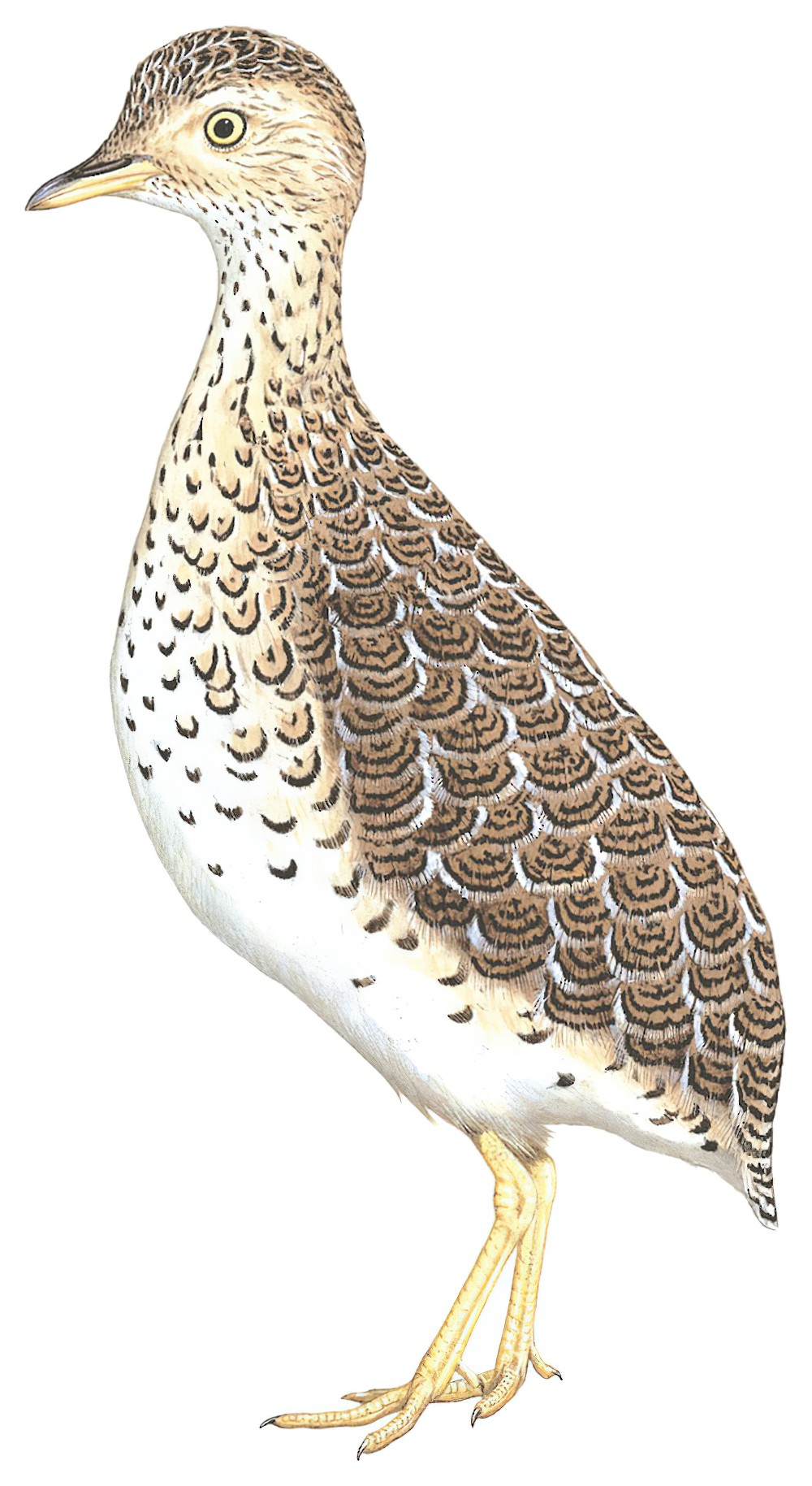Plains-wanderer / Pedionomus torquatus

Plains-wanderer
SCI Name:
Protonym: Pedionomus torquatus Proc.Zool.Soc.London(1840) (1840), Pt8 no.92 p.114
Taxonomy: Charadriiformes / Pedionomidae / Pedionomus
Taxonomy Code: plawan1
Type Locality: Interior of South Australia = plains near Adelaide.
Author: Gould
Publish Year: 1840
IUCN Status: Critically Endangered
DEFINITIONS
PEDIONOMUS
(Pedionomidae; Ϯ Plains-wanderer P. torquatus) Gr. πεδιονομος pedionomos plain-dwelling < πεδιον pedion plain < πεδον pedon ground < πους pous, ποδος podos foot; νομος nomos dwelling place, pasture < νεμω nemō to consume; "And a Rasorial bird of an entirely new form, about half the size of a Quail, and which, were it not for the presence of a hind toe, might be taken for a diminutive bustard. Mr. Gould proposed to make it the type of a new genus, with the following appellation and characters: Genus PEDIONOMUS. Gen Char.— Rostrum tam longum quam caput, apicem versus compressum, fere rectum, naribus valde elongatis, in fovea basali positis. Alæ valde concavæ, remigibus primo, secundo, et tertio, inter se fere æqualibus, remigibus tertiariis perlongis, et primarios transeuntibus. Tibiæ super suffraginem nudæ. Tarsi mediocriter elongati, scutis undique tecti, his, reticulis minutis, sejunctis. Digiti quatuor; horum posticus, debilis, et apud partem internam tarsi, sursum positus. PEDIONOMUS TORQUATUS. ... Hab. The plains of the interior of South Australia." (Gould 1841); "The structure of this singular little bird is admirably adapted for inhabiting those extensive and arid plains which characterize the central portions of Australia ... The lengthened and courser-like legs of the Collared Plain-Wanderer are admirably suited for running, while its short, round and concave wings are as little adapted for extensive flight. Its general contour suggests the idea of a diminutive Bustard." (Gould 1865); "Pedionomus Gould, Proc. Zool. Soc. London, 1840 (1841), p. 114. Type, by monotypy, Pedionomus torquatus Gould." (Peters 1934, II, 150).
Synon. Turnicigralla.
torquatus
L. torquatus collared < torques collar, necklace < torquere to twist.
● ex “Tangara de la Guyane” of d’Aubenton 1765-1781, pl. 742 (syn. Arremon taciturnus).
● ex “Pic à cravate noire” of d’Aubenton 1765-1781, pl. 863 (Celeus).
● ex “Pluvier à collier” of Brisson 1760 (syn. Charadrius hiaticula).
● ex “Ring Plover” of Leach 1816 (syn. Charadrius hiaticula).
● ex “Pluvier à collier de S. Domingue” of Brisson 1760 (syn. Charadrius vociferus ternominatus).
● ex “Clouded Shrike” of Latham 1787 (Cracticus).
● ex “Barbu à Plastron Noir” of Levaillant 1806 (Lybius).
● ex “Ring Pheasant” of Latham 1783 (subsp. Phasianus colchicus).
● ex “Perruche à collier” of d’Aubenton 1765-1781, pl. 551, and “Perruche à collier couleur de rose” of de Buffon 1770-1783 (syn. Psittacula krameri).
● ex “Cochitenacatl” of Hernandez 1651, “Toucan à collier du Méxique” of Brisson 1760, “Cochicat” of de Buffon 1770-1783, and “Collared Toucan” of Latham 1781 (Pteroglossus).
● ex “Gobe-mouche à collier du Cap de Bonne Espérance” of Brisson 1760 (Saxicola).
● "95. TURDUS. ... torquatus. 13. T. nigricans, torque albo, rostro flavescente. Faun. svec. 185. Merula torquata. Gesn. av. 607. Aldr. orn. l. 16. t. 11. Will. orn. 143. t. 37. Raj. av. 65. n. 2. Alb. av. I. p. 37. t. 39. Frisch. av. 30. f. 1. 2. Habitat in Europa." (Linnaeus 1758) (Turdus).
● ex “Perruche à collier” of de Buffon 1770-1783, “Petite Perruche à collier de l’isle de Luçon” of Sonnerat 1776, and “Collared Parrakeet” of Latham 1781 (unident.).
UPPERCASE: current genus
Uppercase first letter: generic synonym
● and ● See: generic homonyms
lowercase: species and subspecies
●: early names, variants, mispellings
‡: extinct
†: type species
Gr.: ancient Greek
L.: Latin
<: derived from
syn: synonym of
/: separates historical and modern geographic names
ex: based on
TL: type locality
OD: original diagnosis (genus) or original description (species)












